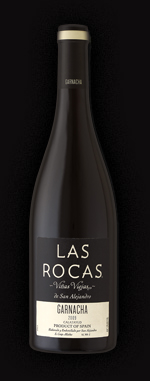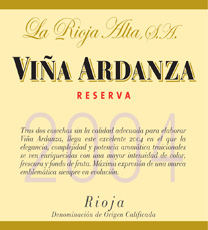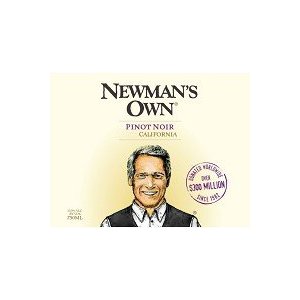I have been following Bodegas San Alejandro for almost ten years now and I have rarely been disappointed. Their website uses the year 2003 as the moment when wine critics really took notice of their wines, so I feel particularly prescient in that I was “ahead of the curve” on “discovering” this little gem of a wine. I’ve watched the price for their wines steadily climb as more and more fans discover the wonderfulness in the bottle. At the current price point the wine is still a good value, worthy of consideration any day of the week.
Bodegas San Alejandro is a cooperative consisting of more than 350 farmers, founded in 1962. The cooperative has almost 3,000 acres under vine in the minuscule town of Miedes, Calatayud, just north of the city of Madrid, within the Perejiles River valley. It is said that the relics of the real San Alejandro are kept nearby at a Franciscan convent.
The Las Rocas brand is the melding of Spain, France and America, with winemakers from all three countries collaborating to create, in their own words: “a modern wine that would capture the unique qualities of Garnacha and the special flavors of the Calatayud region.” The Managing Director of Bodegas San Alejandro, Yolanda Diaz is a truly passionate, focused woman who is dedicated to crafting wines of superior quality and style that showcase the unique terrior of the Calatayud soils. In keeping with this philosophy, the Garnacha grapes are cold soaked before fermentation to ensure the greatest vibrancy to both the color and flavor of the resulting wines, with a judicious use of lightly toasted oak during elevage to enliven spiciness without masking the richness of the fruit. According to Ms. Diaz: “we focus on making wines that are elegant and balanced. The most important element in our winemaking philosophy is to keep intervention at a minimum. Let the land speak in the wine.”
This must be why I like these wines so much, given that I tend to eschew many of today’s highly-manipulated wines…
About the region…
The Calatayud Denominación de Origen (DO) is located in the southwest corner of the Spanish province of Zaragoza, including 14,000 acres of vineyard in 46 small towns along the many river valleys. Most of the vines are planted at altitudes of 2,500 to 3,500 feet above sea level, on diverse soils ranging from chalk and limestone, to clay and marl. The region’s name can be traced back to the Moorish occupation of Spain, when the local governor, Ayud, had a fortress called a Qalat, where the town of Calatayud now stands. Wine has been made in the region for nearly 2,000 years.
The climate of Calatayud is continental with hot, dry summers and very cold winters. While summer temperatures occasionally soar to 100°F and the winter months pose a frost risk, the vines generally enjoy a temperate climate year-round. Most of the vineyards have loose, rocky limestone soils with low nutrient levels and high lime content. With an average annual rainfall between 12 and 20 inches, the vines in this region have to work their way deep into the fractured soils to find the water and nutrients they need to flourish.
Calatayud is best known for its red wines, which represent 83% of yearly wine production in the region. Of the 11 wine grape varieties approved for the DO (7 red and 4 white), Garnacha is by far the most widely planted with 55% of the overall total.
I recently had cause to taste the 2009 vintages of both the standard and Viñas Viejas bottles. Characteristic of Bodegas San Alejandro, I was very pleased with both…
My tasting notes:
2009 Bodegas San Alejandro Las Rocas Garnacha, Calatayud ($12.99/bottle)
Jammy, blackberry nose with spicy, black cherry and vanilla hints. Medium-bodied with moderate acidity and supple, well-integrated tannin – well balanced. Fruity palate, black cherry, anise and violet notes. Juicy. Moderate length – smooth and easy drinking – not for aging. Great value.
2009 Bodegas San Alejandro Las Rocas Viñas Viejas Garnacha, Calatayud ($19.99/bottle)
Dark fruity nose, jammy with black cherry, blackberry and anise hints. Full-bodied with moderate acidity and supple, soft tannin – well balanced. Lush palate with lively fruit – cherry, berry and vanilla notes. Nice, refined structure. Long finish – smooth with layered complexity – spicy. Drinking well now and should hold for another 2 to 3 years in bottle.
Personally, I thought that the straight-up Garnacha was the real value here, given that the premium Viñas Viejas didn’t offer enough of a step-up in quality to warrant the additional cost… In my humble opinion.
Cheers!








